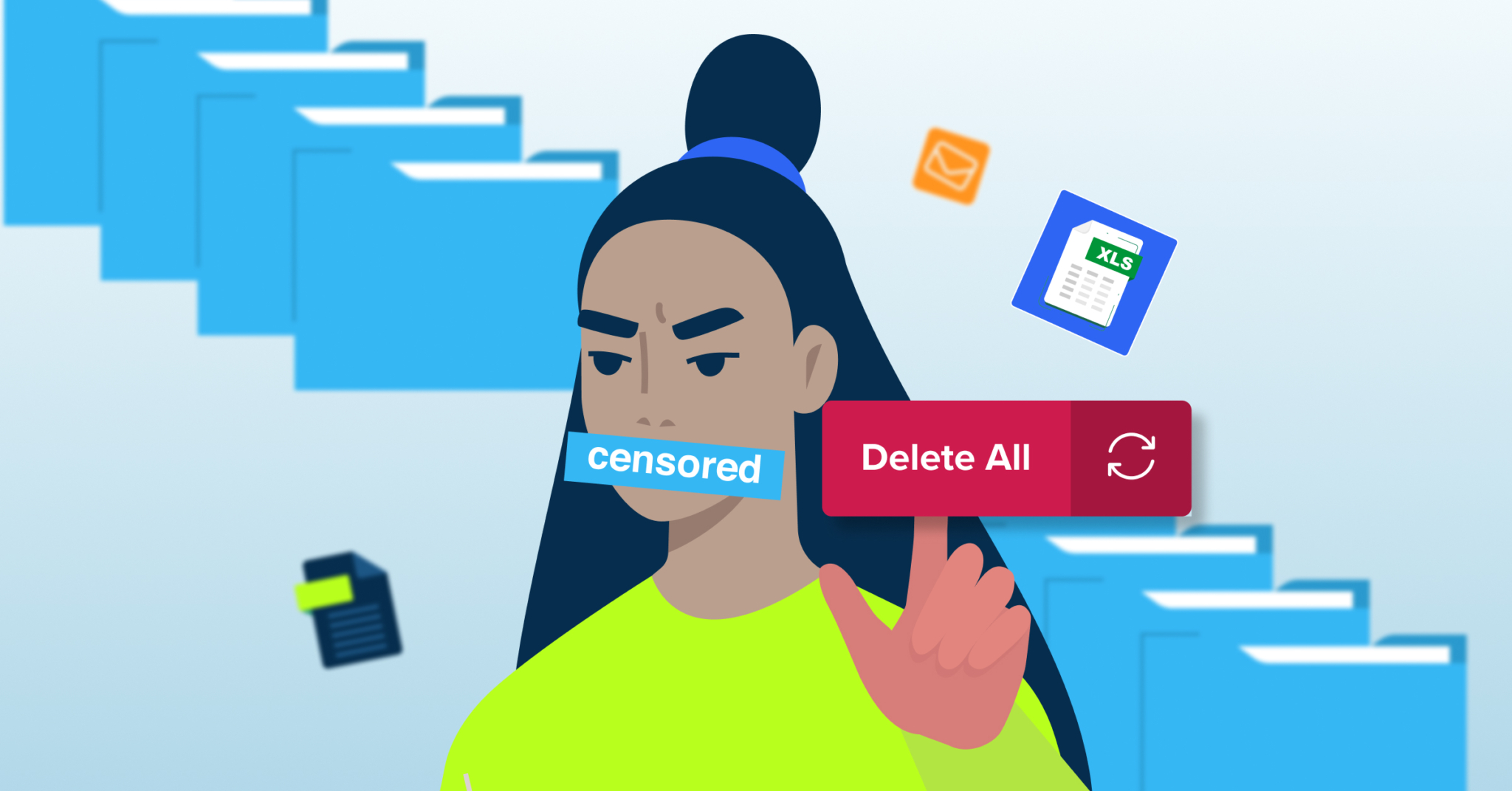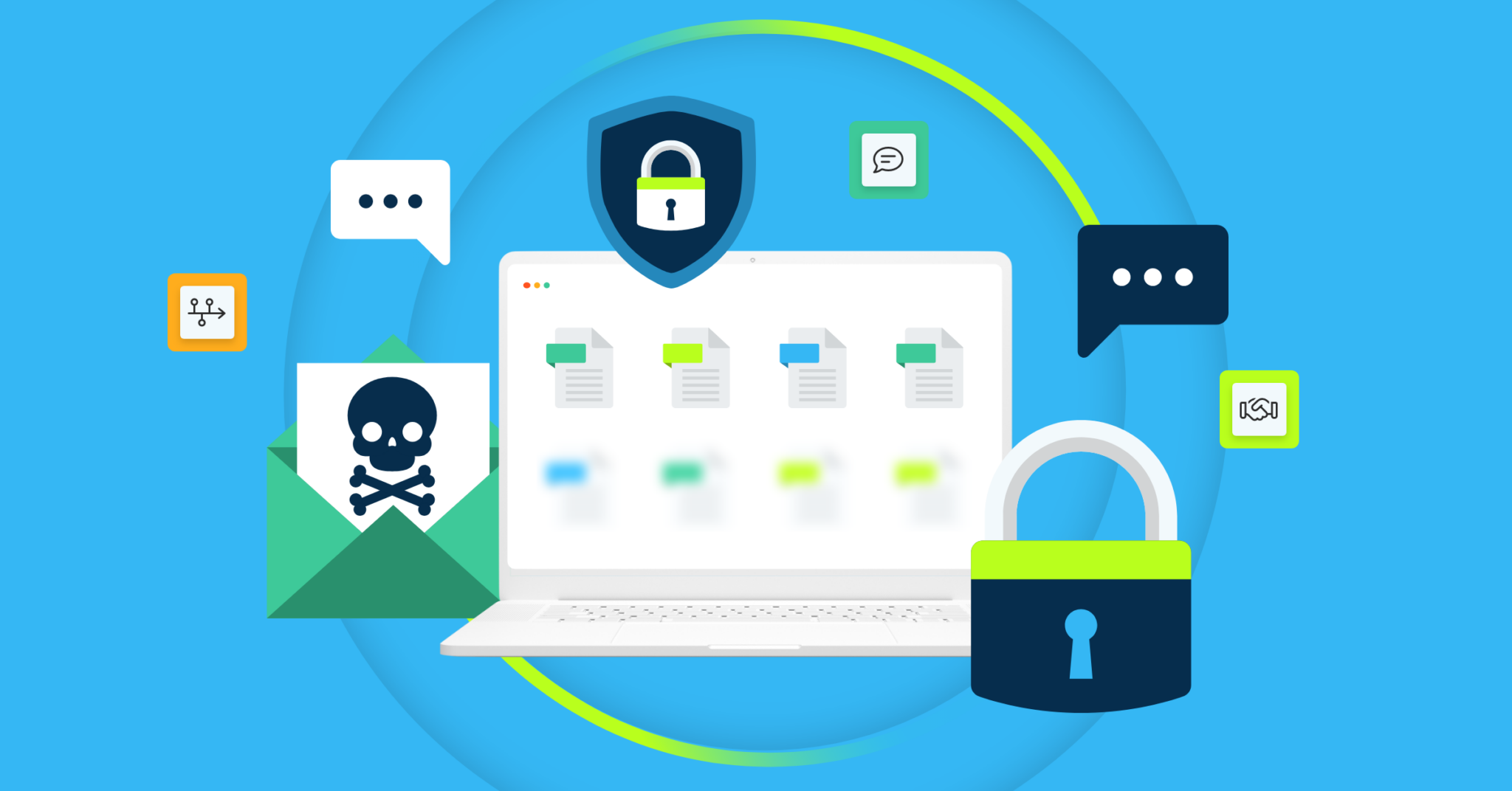
Allow me to get straight to the point – rage deletion presents a threat to your organization. One in twenty workers admit to rage deletion. Even more alarming, one in ten Gen Z employees have admitted to doing it. With rage deletion on the rise, preventing it must be a major part of your organization’s data resilience efforts. To ensure your organization’s data is protected from rage deletion, we want to help you understand what it is, why it’s occurring, and the ways to prevent it from significantly impacting your organization.
What Is Rage Deletion?
Rage deletion refers to an employee deleting files before quitting or after being fired. You likely already know how much damage a disgruntled employee can do to your business by deleting files and if you’re like me, it’s . It can cause you to permanently lose important files and it will hurt your org’s productivity as team members redo lost work. Rage deletion also damages client trust when sensitive information is deleted or projects stall because of missing files.
How Common Is Rage Deletion at Businesses?
Rage deletion is damaging to organizations of any size. In light of this, it’s unfortunate that the trend is growing. A recent Work Trend Security Report from CrashPlan surveyed over 2,300 workers about rage deletion. The study found the following:
- 1 in 6 workers has experienced a coworker intentionally deleting important company data before quitting.
- 1 in 20 workers admit to committing rage deletion.
- 1 in 10 Gen Z workers admit to committing rage deletion, meaning they’re twice as likely to do so compared to the general population.
- The most common roles that admitted to personally committing rage deletion include design engineers and designers (11%), editors and writers (9%), video producers (7%), and developers and programmers (7%).
Why Is Rage Deletion a Growing Trend?
Rage deletion occurs for a number of reasons, such as general job dissatisfaction, political activism, or interpersonal issues between employees. As you try to prevent rage deletion at your company, review the primary reasons for an employee deleting company files below:
- Job dissatisfaction: One of the most common reasons for rage deletion is job dissatisfaction. For example, the Work Trend Security Report found that rage deleters were often upset about having to work overtime more than 10 times a week. Rage deleters were also often unhappy about the increased pressure to show productivity at work and a lack of professional development opportunities.
- Political disagreements or activism: Employees who disagree with their company for political reasons are more likely to be rage deleters. If they decide to quit or are fired, they could delete important information as a type of political activism.
- Interpersonal issues: Employees who are angry with their boss or another employee are also at a higher risk of becoming rage deleters. For instance, a departing employee may try to delete files that another coworker or their boss needs in revenge.
- Past rage deletion: The Work Trend Security Report discovered that rage deleters were twice as likely to have witnessed another coworker’s rage deletion. This finding indicates that rage deletions may have a domino effect, giving other employees the idea to do it as well.
What Do I Do If My Employee Quit and Deleted His Files? How Backup and Recovery Solutions Can Help
While the ultimate solution to rage deletion is to address the primary reasons for rage deletion at your organization; it’s not possible to make everyone happy all of the time. Since it’s almost impossible to prevent employees from deleting files on their devices completely, companies must take steps to properly back up their files and have access controls that limit who can access their backups.
Backup and recovery solutions are an excellent way to eliminate the threat of data loss even when an employee deletes important files. These solutions automatically back up files – creating a copy of the original file and transferring this copy to a secure cloud controlled by your organization.
When an employee deletes company files on their endpoint device, the backup copy is still available in the cloud. Since you can easily restore the file from the cloud, the deletion can’t do lasting damage to your business. For extra security, any endpoint backup provider you choose should also have configurable access controls that restrict who can access or modify backups. These controls ensure that only your most trusted employees can access your backup data, significantly reducing the risk of deleted backups.
Protect Your Data From Rage Deletion With CrashPlan
If you want to protect your data from rage deletion, CrashPlan’s endpoint backup solutions can help. With automatic 15-minute backups and fast data restoration speeds, our endpoint backup solutions can protect your organization from rage deletion. Our solutions also feature a variety of role-based access and permissions controls, making it easy to restrict who has access to your backups.
Learn more about our Enterprise plan today. If you’d like to see how CrashPlan can protect your files from rage deletion, please sign up for our free trial.






